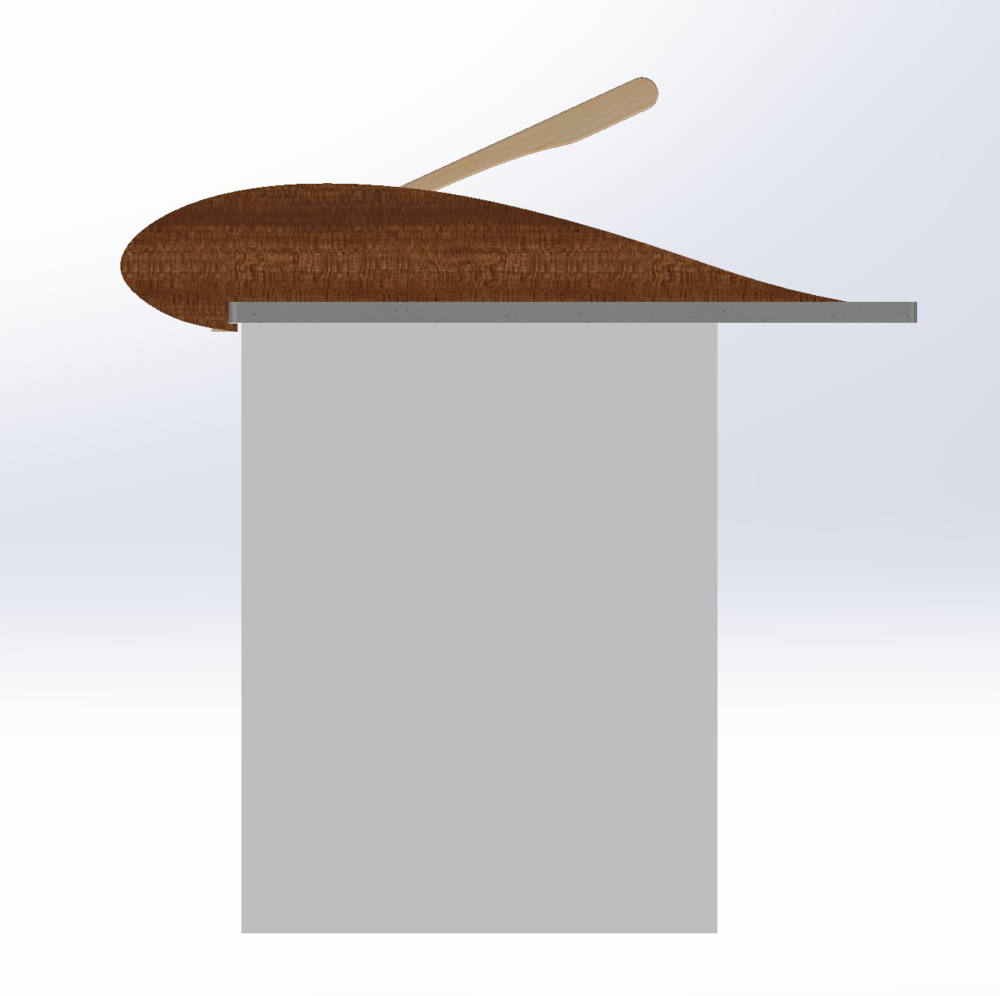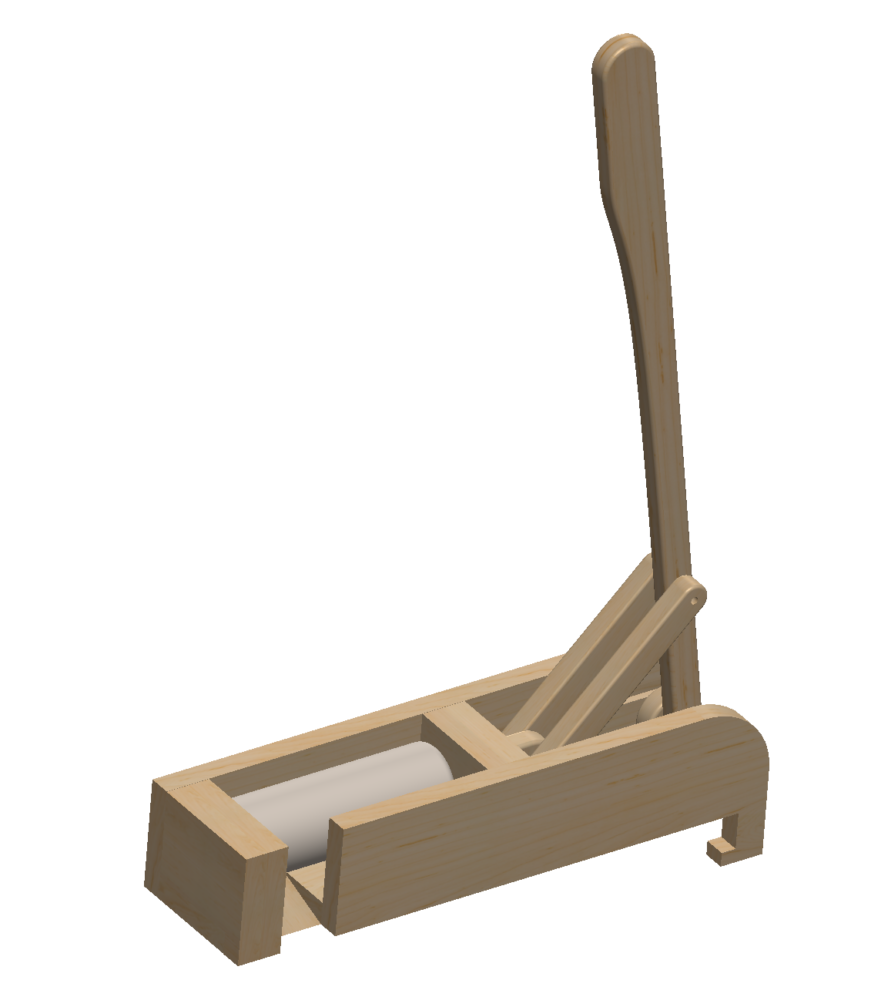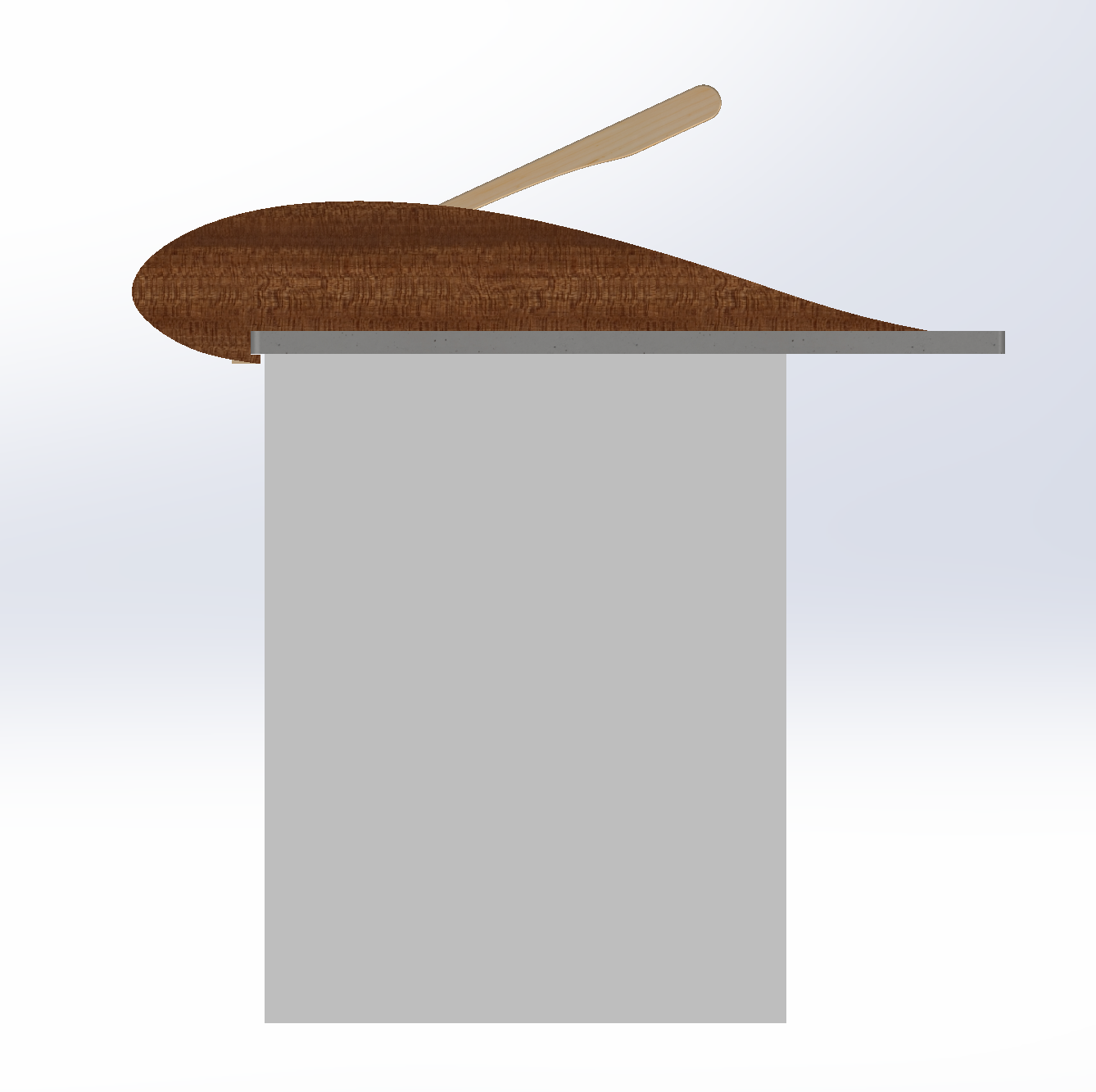Background and Purpose
My family is originally from Germany and, therefore, I love to drink sparkling water. I prefer sparkling water over regular water because I find it more refreshing. As a result, I go through many aluminum cans which all end up in the recycling bin. Each aluminum can takes up a substantial amount of volume in my recycling bin which means I need to empty it more often. In Michigan (where I grew up) you would get a store credit for bottle return which is not possible where I am currently living. Therefore, I will be making an aluminum can crusher which you can place the can into and then crush it. Through this process, I hope to learn more about woodworking and the different tools and techniques required to add various design elements to a piece of wood.

Specifications
- The aesthetic of the device is the most important spec as this is an aesthetics in design class. The aesthetics goals for this design are that it will look aerodynamic, with a hint of minimalism. The main aesthetic component of the design will be the profile of the aerodynamic airfoil. The wood itself is not an aesthetic, however, it does contribute to the aesthetic by adding natural warmth, texture, and organic qualities. The beauty of wood lies in its diverse grain patterns, colors, and the way it responds to light. The lighter and darker color of the wood will be complemented and contrasted well by the lighter toned countertop. There will also be an industrial aesthetic that the design will introduce into the space when looked at from above because all of the moving pieces, linkages, fasteners, and other components of the mechanical device can be seen.
- Safety is also a very important specification as I do not want to injure any fingers when I use the device. This means that there are no pinch points or sharp edges at which the user could pinch or cut themselves. The device should also have channels where the countertop can slide into. This will ultimately keep the module from sliding across the countertop or from being flipped over if the user inputs a force at different angles.
- The functionality of the device is important as its main job is to crush aluminum cans with ease. A standard 12 oz aluminum can is 4.83 inches tall and the device must crush the can to a new length of 1.75 inches or less. The device should also be able to accommodate a standard plastic water bottle so the feeder must be greater than 8.5 inches.
- Human Factors will also be accounted for in the design. I am designing the device for myself and therefore my build allows me to comfortably use a 2 foot lever without putting myself in any uncomfortable positions. The handle will also have an ergonomic grip for fingers which prefects slipping and sliding. After the can or plastic bottle gets crushed, it should automatically be dispensed from the device out of an opening in the side. The force of gravity will be used to remove the crushed object out of the feeder and it will then automatically fall into the recycling bin. This will make the process more efficient. Any components that interface with the user must not be too long or short, because this can sacrifice and negatively effect the ergonomics as well as the power and force needed to be inputted by the user. The user will be crushing the can using their strength by taking advantage of leverage and physics and the user is considered to be the average adult. The user should not have to apply more than 20 pounds of force to the lever to crush the can.
- Size and Weight is also an important spec. A slim profile is needed because when the device is not in use, I will hang it from a cabinet wall in the kitchen area. Therefore the device should also be under 30 pounds which makes it easier to transport and move around.

Constraints.
- I do not have much wood working experience which makes it more difficult to design the device for manufacturing. This is one of the reasons I chose to use wood, I wanted to learn more about the capabilities and limitations to woodworking and how this would differ from a machine shop. This will be the toughest to work with because it can increase the time I spend in the woodshop if I don’t design something with manufacturability in mind.
- Time is another constraint as other class work and projects take a lot of time out of my schedule. Therefore I have started the project early and stayed ahead of schedule which allows me to manage my time more easily.
- Budget is a constraint because a lot of the rare woods I would like to use for the airfoils are expensive. Maple is also a higher end wood and takes a significant amount out of the budget.
- Size is a constraint because have limited kitchen and countertop space. Therefore a slim profile is important.
- Color pallet of kitchen is a constraint because it limits the types of wood I can use in order for the device to match and fit well with the rest of the kitchen area.


2 Comments. Leave new
Hi Tim,
I have a question about the choice of wood you are using for your lever and crushing mechanism, specifically relating to project longevity. Since this can crusher is a tool that you will use regularly, and hopefully will be able to have it for some time, the components will naturally start to wear out after a while. You have already mentioned using some hard wood like Maple, but I might also look into some metal for some of the high wear components of your design.
Hi Tim,
This looks like a really cool and creative project! I was wondering, did you do any calculations to land on a 2 foot lever? Also, I was wondering with the limited space constraints, will this lever be removable for storage if needed? Overall, I think this is a fun and interesting project that will help make life easier for you!